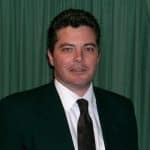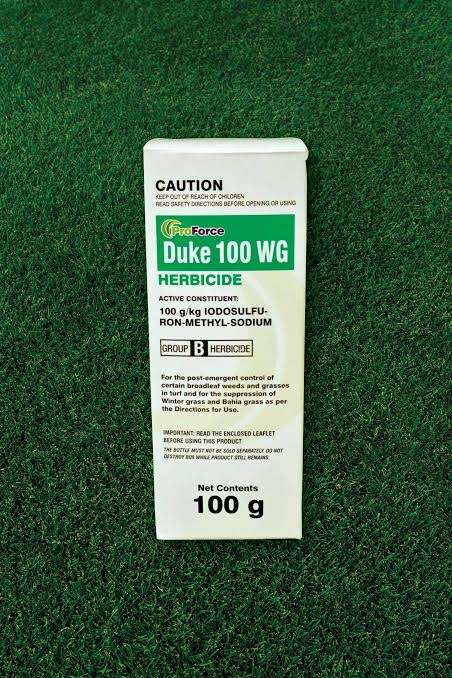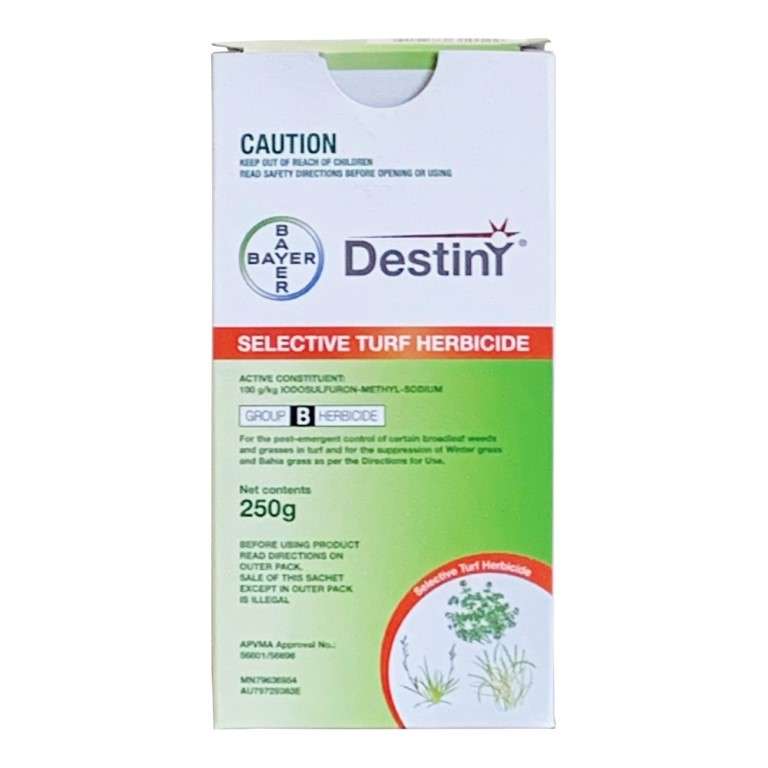Generic vs branded pesticides
Turf managers face the choice of using generic vs branded turf chemicals on an everyday basis. But what are the differences between generic vs name brand products? The recent release of the Guide to Turf Chemicals by IGFH will help in any choice you make but with the economy struggling and inflation increasing it’s a choice that is becoming more relevant. As sports turf consultants we are here to help.
I would guess that many of you have at some stage made a visit to the medicine cupboard for an Aspirin® or used “Roundup®” for controlling your weeds. However, how many of you actually use Aspirin® for that headache or use Roundup® for weed control?
A brief look in my medicine cabinet shows no aspirin. Instead, there is “disprin®” which the packet informs me contains the same active. In the turf industry, most turf managers use a generic Roundup® as “it’s the same stuff but costs less”. Do these work the same and what factors influence this purchasing behaviour?
Generic vs branded pesticides: Definition.
The simplest way to define a generic turf chemical is as one that is manufactured by a company other than the original manufacturer. A generic manufacturer is, “a company, or division of a company, whose major activity consists of manufacturing the active substances of pesticides, the patents for which have expired, and for which it did not hold the original patents” (Hicks, 1994).
In 1996, patent-protected active substances accounted for 47% of the total global agrochemical market (Anon, 1998). As of 2002 generics comprised up to 60% of the herbicide market (Ryan, 2002). In 2016 most analysts put generics share of the total crop protection market at 25% to 30%.
In terms of size, the biggest generic producer in 2008 was the Israeli company Makhteshim-Agan, which partly owned Farmoz (Adama) in Australia. Other major companies included the US Griffin, and the Danish company Cheminova Agro. This increase in the use of generic turf chemicals led in 2018 to Reuters to report that even BASF was looking at entering the generic market.
More than 100 kinds of agrochemicals will go off-patent before 2023 valued at US $11.0B. To counter this established players reformulate off-patent products into profitable agrochemical cocktails.
These look-alike products with different commercial names but the same active ingredient have become commonplace in the Australian turf market. This raises the question will they work well for you and save you money?
Generic vs branded pesticides: Registration.
The price of registered turf chemicals includes the testing and registration process costs and It’s this that assures quality and efficacy (Neylan, J 2007). Registered turf chemicals pass a rigorous testing programme that ensures the products are suitable for use. When used according to the label instructions manufacturers provide a warranty.
In the USA to get registration, a generic product must have the same technical merit as the current manufacturer-branded product (Fabrotta, 2007). The active ingredient must be the same technical material, which might be produced by the branded or another manufacturer. This is also true of solvents and inert ingredients. The EPA must approve any changes from the original branded product before it is registered.
In the turf industry, chlorothalonil, iodosulfuron and iprodione are among the chemistries that have been off-patent long enough to gain a proven track record. Many turf managers are happy with the respective performances of these generic vs name brand products. Examples include the Duke® herbicide, Recondo herbicide, Voltar® 500 fungicide and chlorothalonil, sold as Squadron® Weather Ace.
Chemistry coming off patent has also resulted in several granular products coming onto the market. These are granular pre-emergent herbicides like Onset 10GR® products like Echelon Duo® containing a fertilizer, pre-emergent herbicide and an insecticide.
Patent expiry of pesticides
The reason for the growth in these look-alike products is the patent expiration. In the USA, a chemical patent lasts for 17 years. In Australia, this period is 8 years of data protection. During those years, only the company that has developed the product can produce and commercialize it. After this, any company can synthesize the herbicide and commercialize it under a different name. For example, check this article on branded and generic combination fungicides.
However, there are three obstacles to going to market with an off-patent chemical. Firstly, the original manufacturer can lower the branded product’s pricing, which has occurred here with imidacloprid.
The second reason is that the original manufacturer might successfully develop an improved turf-specific formulation. This is now under patent protection, as is the case with Banner Maxx (144g/L) (Syngenta).
The third obstacle to marketing an off-patent product is cost. While generic products offer price advantages, experience shows that they are only able to capture between 10-30% of the market.
However, assuming a generic manufacturer decides to enter the market the major driver is their cheaper price. As manufacturers do not pay the cost of developing the herbicide, they can sell the generic products cheaper than the brand-name alternative.
Regardless, the core issue is are generics as good as brand-name ones.?
The simple answer is yes.
- For example, a 2017 article, shows that you can save money and get the same level of weed control by using generic pesticides.
- In 2018 although generic pesticides are not identical to their branded equivalents, they tend to be very similar in terms of performance. To receive an APVMA registration, a generic product must have the same technical makeup as the branded version. In reality, the same companies often manufacture the same generic and branded products.
Active Ingredients of generic chemicals
Generic and the original products have the same active ingredients. As a result, they should have the same performance. However, generic and brand-name chemicals do not have to have the same inactive ingredients.
For example, with soil-applied herbicides, the inactive ingredients should only influence the handling and mixing properties of the formulation. How the herbicdie performs in the soil should not be affected by its inactive ingredients.
How well the product sticks to the leaf surfaces is another good example. The composition of the inactive ingredients (solvents, stabilizers, emulsifiers, surfactants, and other additives) can have a big influence on a chemicals performance.
Additives can make a difference in the performance of a product you are buying. They are listed on the label as inert ingredients and no further information is given. Nevertheless, these products are extensively tested before release and so differences should be minimal.
The physical form of generic chemicals.
One difference between generic and brand-name chemicals is the physical form of the active ingredient.
Glyphosate, the active ingredient of Roundup® has several generic versions on the market. These differ in chemical form, i.e. potassium, di-ammonium, or mono-ammonium salts. However, several studies show only minor differences between the glyphosate formulations and differences in results are most likely due to variations in the weed populations.
Generic products perform as well as their branded products when they have the same inactive ingredients and isomer structure. When evaluating whether generic products fit your business, you should compare their cost, safety and relative performance.
Research
Gannon and Yelverton (2007) compared generic vs name brand plant growth regulators and herbicides.
- They looked at the cost, how well they work, and any formulation issues with generic oxadiazon, quinclorac, and trinexapac ethyl. The end conclusion is that there is no significant difference in generic vs name brand products.
- Kaminski and Lulis (2010) looking at chlorothalonil products. All treatments provide equal control of dollar spot.
According to a Golfdom survey in 2006, in the USA about two-thirds of turf managers use generic chemicals on their golf courses. About one-third spent half of their total chemical budget on generics with 93% saying the primary reason is cost.
Price, product support, and the actual distributor who sells the product are all factors that should enter the “mix” when making a decision.’
Turf agronomy.
Whether buying generic or branded products you should buy from qualified dealers who can also give good advice. It is this that will help maintain industry standards as although the products, formulations, and results might be similar between branded and generic products, the support might not be.
For the most turf managers, this means that there are only a few companies that meet these criteria. Sure there are a lot of companies who can supply the product. There are also a lot of companies who say they give good advice. But there are very few who are able to advise how to use them properly. As qualified turf agronomists, we can guide you through any buying decision when it comes to choosing between generic vs name brand products.
Making the purchase decision.
There are four factors that go into making a purchase decision.
- First, does the product work?
- Second, is a generic product cost effective?
- Three, have you a good relationship with your supplier? This doesn’t mean buying a product and then getting a heap of hardware vouchers in return. Instead it means can you trust the supplier to give you the best possible technical support?
Some branded manufacturers do give more than just product guarantees. They offer continuing education opportunities via product training seminars and sponsorships of associations. However, very few of these do conduct any research and development. The companies that actually do are the ones are helping to build the foundation for future turfgrass maintenance programs.
So does this justify charging higher-end pricing for “old” technology? Sure, charging a high price for new technology is all well and good but is it justifiable for older molecules?
Chices, choices, choices.
The reality is that turf managers now have several options when it comes to buying generic or branded products. Significant opportunities exist for generic manufacturers, who can move from complete reliance on price-sensitive, commonly available active substances.
The information on this website is for general purposes only. The information is provided by Gilba Solutions and while we try to keep it up to date and correct, we make no representations or warranties of any kind, express or implied, about the completeness, accuracy, reliability, or suitability with respect to the website or the information, products, or services, on the website for any purpose.
©, 2022, Gilba Solutions, All rights reserved.

Jerry Spencer
Graduated from Newcastle University with an Hons Degree in Soil Science in 1988, Jerry then worked for the Sports Turf Research Institute (STRI) as a turf agronomist before emigrating to Australia in 1993.
He followed this by gaining a Grad Dip in Business Management from UTS. He has worked in a number of management roles for companies as diverse as Samsung Australia, Arthur Yates and Paton Fertilizers.
He has always had a strong affinity with the Australian sports turf industry and as a result he established Gilba Solutions as an independent sports turf consultancy in 1993. Jerry has written over 100 articles and two books on a wide range of topics such as Turf Pesticides and Nutrition which have been published in Australia and overseas.



